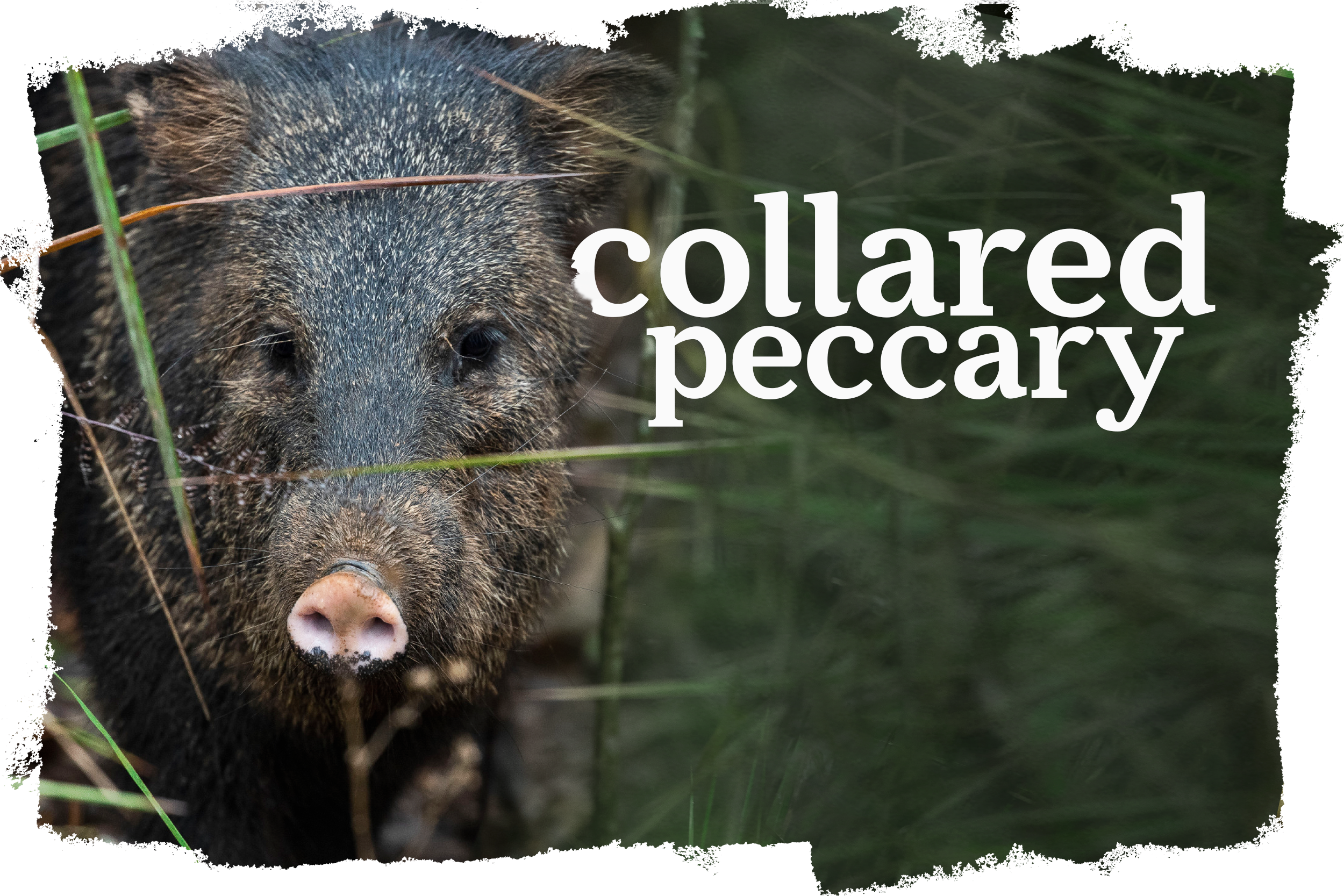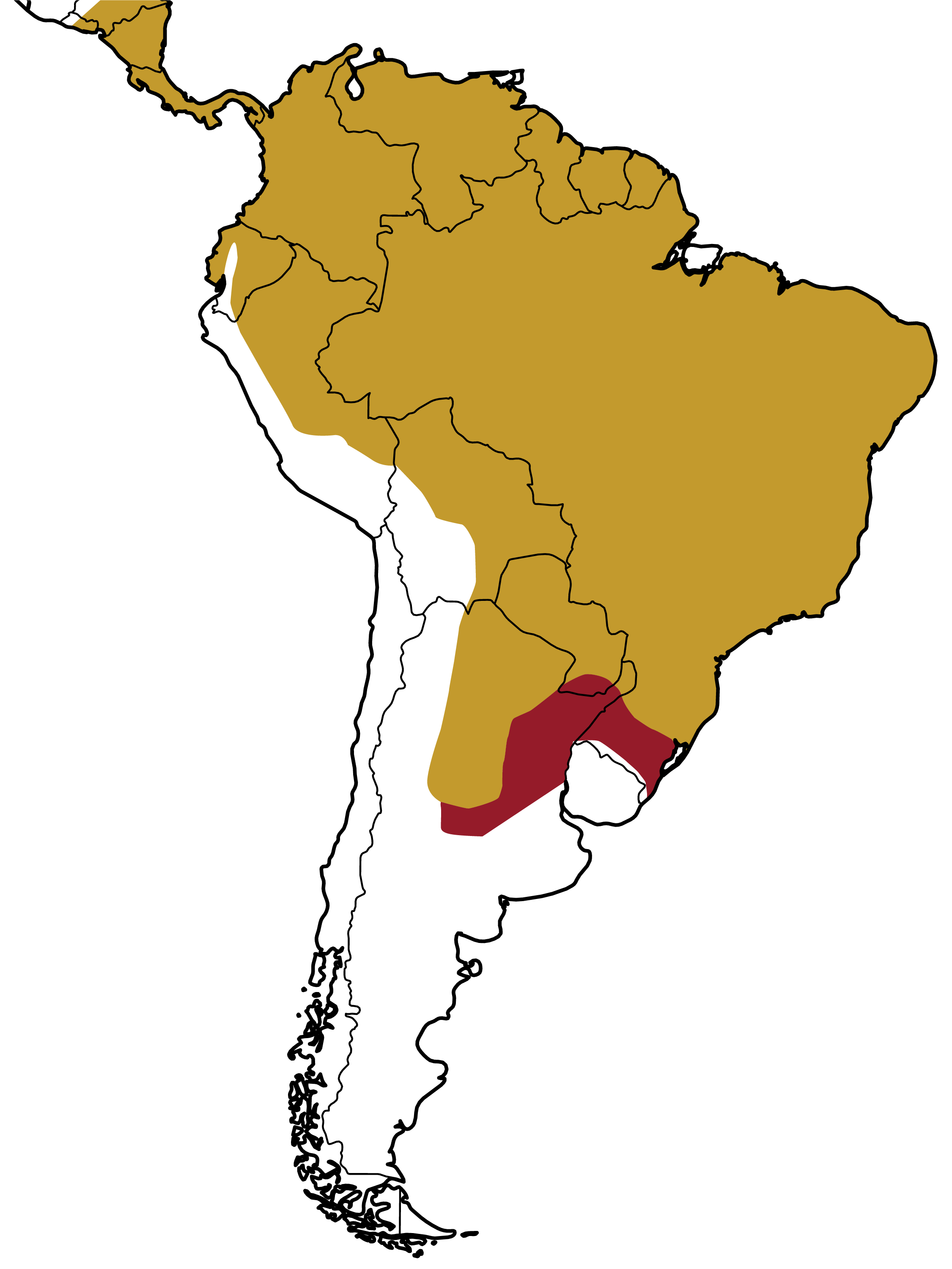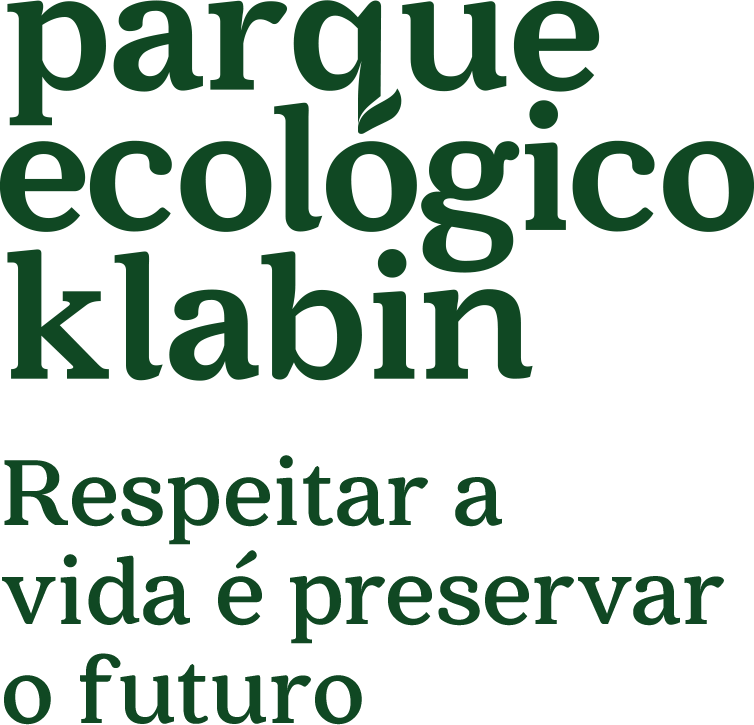collared peccary


The collared peccary is popularly called a "bush pig" and is found in every biome in Brazil. They are found in the same places as white-lipped peccaries and regularly cross paths with each other.
14kg and 30kg
75cm to 1,00m
20 years in captivity
Important data
MAIN FEATURES
They have long snouts, short legs, and small feet, proportionally to the rest of the body. Their long, rough hair is usually a mix of gray in black. The white hair band around the neck looks like a collar. They have a mane of longer, darker hair on their backs.
TOP THREATS
The main threats are the destruction of their habitat and intensive hunting.
DIET
In the Brazilian caatinga region it eats roots, tubers, and seeds. In tropical forests, its main diet is fruit, leaves, roots and tubers. It can also eat larvae, insects, amphibians and reptiles.REPRODUCTION
Females, after approximately 145 days, usually give birth to one or two babies at a time, and they are raised by the mother, aunts and other females in the group.BEHAVIOR
● They usually live in groups of 15 to 20 but can form groups of up to 50.
● They snarl and bristle their manes when threatened.
● They are active night and day.
HABITS
Predominantly active at night and in the twilight, with a living area of up to 24 km.
TRIVIA
Their stomachs have compartments, which allow them to feed on various things, including fibrous foods, leftover vegetables, fruit and small vertebrates.
Geographical distribution





